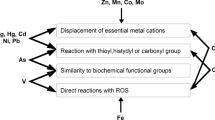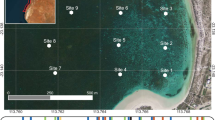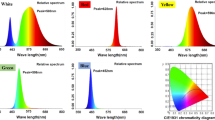Abstract
The toxic reactive oxygen species (ROS), produced naturally in an oxygenated environment, led to the development of antioxidant defenses by aerobic organisms to prevent tissue damage. Polar marine waters are regarded as a strongly prooxidant ecosystem, due to the high dissolved oxygen level and intense UV radiation during summer, while the deep waters are considered refuges against oxidative stress. In order to further elucidate the prooxidant and antioxidant forces associated with cold-water ecosystems and the implications of UV radiation, we sampled three amphipod species living at three different depths in the same water mass of the Arctic Ocean, characterized by low temperature (ca. 0°C), high oxygen level, and high ROS concentration in the surface water. The three species were the deep-sea amphipod Eurythenes gryllus, the benthic sublittoral amphipod Anonyx nugax and the surface-water species Gammarus wilkitzkii inhabiting the ice pack. The total oxyradical scavenging capacity (TOSC) was measured in the cytosolic fraction of the digestive gland and in the cell-free hemolymph of the three amphipod species. A significantly low TOSC toward peroxyl and peroxynitrite radicals (P<0.05) in E. gryllus compared with the shallow-water species (A. nugax) can be explained by the low metabolism of the deep-sea species. In the cell-free hemolymph, TOSC values are similar between E. gryllus and A. nugax, while in G. wilkitzkii a lower and higher TOSC toward hydroxyl and peroxynitrite, respectively, indicate specific adaptation to oxidative stress. Experimental exposure of A. nugax and G. wilkitzkii to H2O2 resulted in a significant change in TOSC (P<0.05) measured in the digestive gland and in the cell-free hemolymph of A. nugax, while no change (P>0.05) was noted in G. wilkitzkii. These data suggest that A. nugax is highly susceptible to oxidative stress and that G. wilkitzkii is characterized by a mechanism that prevents the diffusion of exogenous ROS through the gills or allows excretion of internal H2O2 through the gills to the environment.







Similar content being viewed by others
References
Aarset AV (1991) The ecophysiology of under-ice fauna. Polar Res 10:309–324
Bell KL, Smith VJ (1994) Occurrence and distribution of antioxidant enzymes in the hemolymph of the shore crab Carcinus maenas. Mar Biol 123:829–836
Bradford MM (1976) A rapid and sensitive method for the quantitation of microgram quantities of protein utilising the principle of protein-dye binding. Analyt Biochem 72:248–254
Britton JC, Morton B (1994) Marine carrions and scavengers. Oceanogr Mar Biol Annu Rev 32:369–434
Childress JJ (1995) Are there physiological and biochemical adaptations of metabolism in deep-sea animals? Trends Ecol Evol 10:30–36
Cooper WJ, Shao CW, Lean DRS, Gordon AS, Scully FE (1994) Factors affecting the distribution of H2O2 in surface waters environmental chemistry of lakes and reservoirs. Adv Chem Ser 237:391–422
DiGiulio RT, Washburn PC, Wenning RJ, Winston GW, Jewell CS (1989) Biochemical responses in aquatic animals: a review of determinants of oxidative stress. Environ Toxicol Chem 8:1103–1123
Duquesne S, Liess M (2003) Increased sensitivity of the macroinvertebrate Paramorea walkeri to heavy-metal contamination in the presence of solar UV radiation in Antarctic shoreline waters. Mar Ecol Prog Ser 255:183–191
Estevez MS, Malanga G, Puntarulo S (2001) UV-B effects on Antarctic Chlorella sp. cells. J Photochem Photobiol B Biol 62:19–25
Gieseg SP, Cuddihy S, Jonathan VH, Davison W (2000) A comparison of plasma vitamin C and E levels in two Antarctic and two temperate water fish species. Comp Biochem Physiol B 125:371–378
Heise K, Puntarulo S, Pörtner HO, Abele D (2003) Production of reactive oxygen species by isolated mitochondria of the Antarctic bivalve Laternula elliptica (King and Broderip) under heat stress. Comp Biochem Physiol C Comp Pharmacol Toxicol 134:79–90
Janssens BJ, Childress JJ, Baguet F, Rees JF (2000) Reduced enzymatic antioxidative defence in deep-sea fish. J Exp Biol 203:3717–3725
Legeżyńska J, Weslawski JM, Presler P (2000) Benthic scavengers collected by baited traps in the high Arctic. Polar Biol 23:539–544
Lønne OJ, Gulliksen B (1991) Sympagic macro-fauna from multiyear sea-ice near Svalbard. Polar Biol 11:471–477
Opalinski KW, Weslawski JM (1989) Oxygen consumption in Arctic amphipods: metabolic cold compensation. In: Klekowski RZ, Jurewicz-Styczynzka E, Falkowski L (eds) Proceedings of the 21st Eur Mar Biol Symp. Ossolineum, Wroclaw, pp 137–142
Premke K, Muyakshin S, Klages M, Wegner J (2003) Evidence for long-range chemoreceptive tracking of food odour in deep-sea scavengers by scanning sonar data. J Exp Mar Biol Ecol 285/286:283–294
Qian JG, Mopper K, Kieber DJ (2001) Photochemical production of the hydroxyl radical in Antarctic waters. Deep-Sea Res Part I 48:741–759
Regoli F, Winston GW (1999) Quantification of total oxidant scavenging capacity of antioxidants for peroxynitrite, peroxyl radicals and hydroxyl radicals. Toxicol Appl Pharmacol 156:96–105
Regoli F, Principato GB, Bertoli E, Nigro M, Orlando E (1997) Biochemical characterization of the antioxidant system in the scallop Adamussium colbecki, a sentinel organism for monitoring the Antarctic environment. Polar Biol 17:251–258
Regoli F, Nigro M, Bompadre S, Winston G (2000a) Total oxidant scavenging capacity (TOSC) of microsomal and cytosolic fractions from Antarctic, Arctic and Mediterranean scallops: differentiation between three potent oxidants. Aquat Toxicol 49:13–25
Regoli F, Nigro M, Chiantore M, Gorbi S, Winston G (2000b) Total oxidant scavenging capacity of Antarctic, Arctic, and Mediterranean scallops. Ital J Zool 67:85–94
Regoli F, Gorbi S, Frenzilli G, Nigro M, Corsi I, Focardi S, Winston GW (2002a) Oxidative stress in ecotoxicology: from the analysis of individual antioxidants to a more integrated approach. Mar Environ Res 54:419–423
Regoli F, Nigro M, Chiantore M, Winston GW (2002b) Seasonal variations of susceptibility to oxidative stress in Adamussium colbecki, a key bioindicator species for the Antarctic marine environment. Sci Total Environ 289:205–211
Rubach S, Sundet J (1987) Ressurskartlegging av haneskjell (Chlamys islandica (O. F. Müller)) ved Jan Mayen og i Svalbardsonen. Skriftserie fra Institutt for Fiskerifag, Serie B: Ressursbiologi
Sainte-Marie B (1992) Foraging of scavenging deep-sea lysianassoid amphipods. In: Rowe GT, Pariente V (eds) Deep-sea food chains and the global carbon cycle. Kluwer, Amsterdam, pp 105–124
Schulz A, Rex M, Harris NRP, Braathern GO, Reimer E, Alfier R, Kilbane-Dawe I, Eckermann S, Allaart M, Alpers M, Bojkov B, Cisneros J, Claude H, Cuevas E, Davies J, De Backer H, Dier H, Dorokhov V, Fast H, Godin S, Johnson B, Kois B, Kondo Y, Kosmidis E, Kyro E, Litynska Z, Mikkelsen IS, Molyneux MJ, Murphy G, Nagai T, Nakane H, O’Connor F, Parrondo C, Schmidlin FJ, Skrivankova P, Varotsos C, Vialle C, Viatte P, Yushkov V, Zerefos C, von der Gathen P (2001) Arctic ozone loss in threshold conditions: match observations in 1997/1998 and 1998/1999. J Geophys Res Atmos 106:7495–7503
Scully NM, McQueen DJ, Lean DRS, Cooper WJ (1996) Hydrogen peroxide formation: the interaction of ultraviolet radiation and dissolved organic carbon in lake waters along a 43–75 degrees N gradient. Limnol Oceanogr 41:540–548
Stolarski R, Bojkov R, Bishop L, Zerefos C, Staehelin J, Zawodny J (1992) Measured trends in ozone. Science 256:342–349
Takeuchi I, Watanabe K (1998) Respiration and swimming speed of the necrophageous amphipod Eurythenes gryllus from Antarctic deep waters. Mar Ecol Prog Ser 163:285–288
Viarengo A, Abele-Oeschger D, Burlando B (1998) Effects of low temperature on prooxidant processes and antioxidant defence systems in marine organisms. In: Pörtner HO, Playle RC (eds) Cold ocean physiology. Society for Experimental Biology Seminar Series 66, Cambridge University Press, Cambridge
Werner I, Gradinger R (2002) Under-ice amphipods in the Greenland Sea and Fram Strait (Arctic): environmental controls and seasonal patterns below the pack ice. Mar Biol 140:317–326
Werner I, Auel H, Friedrich C (2002) Carnivorous feeding and respiration of the Arctic under-ice amphipod Gammarus wilkitzkii. Polar Biol 25:523–530
Weslawski JM, Opalinski KW (1997) Winter and summer metabolic rates of Arctic amphipods. Preliminary results. In: Glowacki P (ed) Polish polar studies: 24th polar symposium. Institute of Geophysics of the Polish Academy of Sciences, Warszawa, pp 307–317
Whiteley NM, Taylor EW, ElHaj AJ (1996) A comparison of the metabolic cost of protein synthesis in stenothermal and eurythermal isopod crustaceans. Am J Physiol 40:1295–1303
Wilhelm D, Gonzaleaflecha B, Boveris A (1994) Gill diffusion as a physiological mechanism for hydrogen-peroxide elimination by fish. Braz J Med Biol Res 27:2879–2882
Winston GW, DiGiulio RT (1991) Prooxidant and antioxidant mechanisms in aquatic organisms. Aquat Toxicol 19:137–191
Winston GW, Moore NM, Kirchin MA, Soverchia C (1996) Production of reactive oxygen species by hemocytes from the marine mussel, Mytilus edulis: lysosomal localization and effect of xenobiotics. Comp Biochem Physiol C 113:221–229
Winston GW, Regoli F, Dugas AJ, Fong JH, Blanchard KA (1998) A rapid gas chromatographic assay for determining oxyradical scavenging capacity of antioxidants and biological fluids. Free Radic Biol Med 24:480–493
Yocis BH, Kieber DJ, Mopper K (2000) Photochemical production of hydrogen peroxide in Antarctic waters. Deep-Sea Res Part I 47:1077–1099
Acknowledgements
The authors are grateful to the crew of the R.V. “Jan Mayen” from the University of Tromsø. This study was financed by the Norwegian Research Council under the program “Marine Resource, Environment and Management” (project no. 146478/120) and by the Norwegian marine research laboratory RF-Akvamiljø.
Author information
Authors and Affiliations
Corresponding author
Additional information
Communicated by M. Kühl, Helsingør
Rights and permissions
About this article
Cite this article
Camus, L., Gulliksen, B. Antioxidant defense properties of Arctic amphipods: comparison between deep-, sublittoral and surface-water species. Marine Biology 146, 355–362 (2005). https://doi.org/10.1007/s00227-004-1424-5
Received:
Accepted:
Published:
Issue Date:
DOI: https://doi.org/10.1007/s00227-004-1424-5




